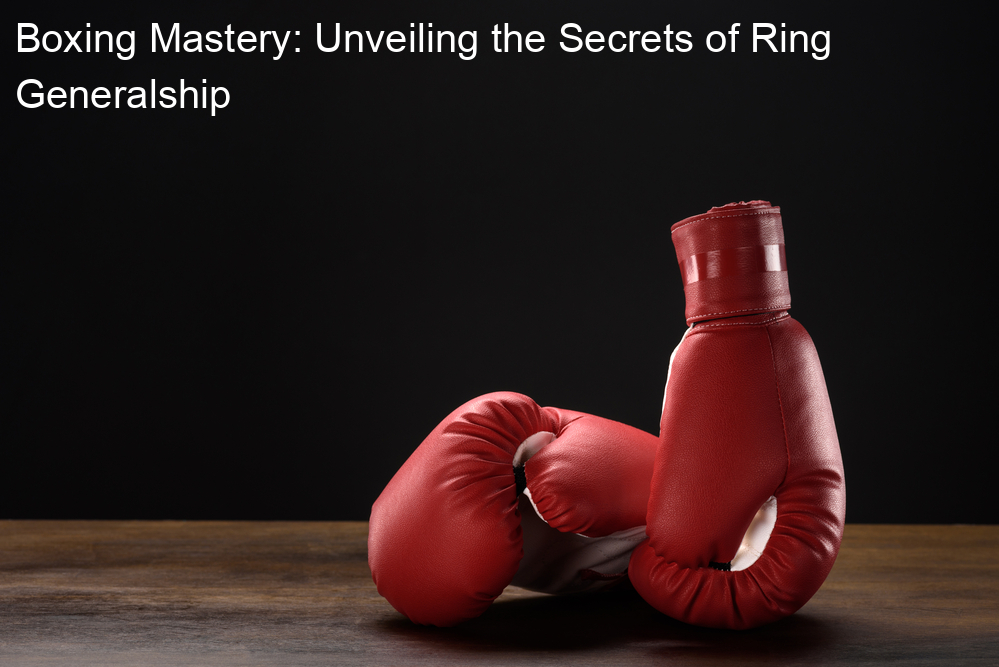
Introduction to Boxing Strategy
Boxing is not just about throwing punches. It’s a sport that requires strategy, skill, and a deep understanding of your opponent’s moves. In this section, we will delve into the importance of strategy in boxing and how mastering it can lead to ring generalship.
- Understanding the Importance of Strategy in Boxing
- How Mastering Boxing Can Lead to Ring Generalship
Strategy in boxing is like a game plan in a football match. It’s the blueprint that guides a boxer on how to approach a fight. Without a solid strategy, a boxer may end up throwing punches aimlessly, which can lead to exhaustion and defeat. A good boxing strategy takes into account the boxer’s strengths and weaknesses, as well as those of the opponent. It’s about knowing when to attack, when to defend, and when to conserve energy.
For instance, if a boxer is facing an opponent who is known for their powerful right hook, the strategy might involve staying out of the opponent’s right range and focusing on counter-attacks. This way, the boxer can avoid the opponent’s strongest punch while exploiting their weaknesses.
Ring generalship refers to a boxer’s ability to control the pace and flow of the fight. It’s about dictating where the fight happens in the ring, how fast it goes, and when it’s time to engage or retreat. This requires a deep understanding of boxing strategy and techniques.
Mastering boxing strategy can help a boxer become a ring general. It allows them to read their opponent’s moves, anticipate their attacks, and respond effectively. For example, a ring general might use their jab to keep an aggressive opponent at bay, or use footwork to control the distance and angle of the fight.
Ring generalship is often the difference between a good boxer and a great one. It’s what separates champions from contenders. And it all starts with mastering boxing strategy.
In the next section, we will explore different boxing techniques and how to master them. So, stay tuned!
Mastering Boxing Techniques
Boxing is a sport that requires a combination of physical strength, speed, agility, and mental toughness. To excel in this sport, one must master a variety of offensive and defensive techniques. Let’s delve into these techniques and understand how they can help you become a better boxer.
Offensive Techniques
- Understanding the jab: A jab is a quick, straight punch thrown with the lead hand. It’s often used to gauge distance, set up other punches, and keep an opponent on their toes.
- Mastering the cross: A cross is a powerful straight punch thrown with the rear hand. It’s typically used after a jab to take advantage of an opponent’s open guard.
- Perfecting the hook: A hook is a punch thrown in a curved motion. It’s often aimed at the side of an opponent’s head or body, making it a great tool for breaking through guards.
- Utilizing the uppercut: An uppercut is a vertical punch thrown with the rear hand. It’s typically aimed at the opponent’s chin, making it a powerful knockout punch.
- Boxing Defense Techniques: The Block: Blocking is a basic defensive technique where you use your gloves to stop your opponent’s punches.
- Mastering the Slip: Slipping is a defensive technique where you move your head to avoid your opponent’s punches.
- Perfecting the Duck: Ducking is a defensive technique where you bend your knees to avoid your opponent’s punches.
- Utilizing the Clinch: Clinching is a defensive technique where you hold onto your opponent to prevent them from throwing punches.
- Importance of physical conditioning: Boxing is a physically demanding sport. Regular conditioning exercises can help improve your stamina, strength, and speed.
- Role of sparring in training: Sparring is a practice fight with a partner. It’s an essential part of boxing training as it helps you apply the techniques you’ve learned in a real fight scenario.
- Developing Boxing Skills through drills: Drills are repetitive exercises designed to improve your boxing skills. They can help you perfect your punches, improve your footwork, and enhance your defensive techniques.
- Understanding ring space: Ring space refers to the area within the boxing ring. Understanding how to use this space can help you control the fight and avoid your opponent’s punches.
- Controlling the center of the ring: The center of the ring is a strategic position. Controlling this area can give you an advantage as it allows you to move freely and forces your opponent to fight on the back foot.
- Using the ropes to your advantage: The ropes can be used defensively to absorb punches or offensively to trap your opponent.
- Adapting to your opponent’s style: Every boxer has a unique fighting style. Adapting your strategy to counter your opponent’s style can give you an edge in the fight.
- Changing tactics mid-fight: Sometimes, your initial strategy may not work. Being able to change your tactics mid-fight can help you turn the tables in your favor.
- Using feints and deception: Feints are fake punches used to deceive your opponent. They can help you create openings for real punches.
- Case Study: Floyd Mayweather’s Defensive Mastery: Floyd Mayweather is known for his exceptional defensive skills. His ability to avoid punches and counterattack has helped him win numerous fights.
- Case Study: Manny Pacquiao’s Aggressive Offense: Manny Pacquiao is known for his aggressive offensive style. His fast and powerful punches have led him to many victories.
- Case Study: Muhammad Ali’s Ring Generalship: Muhammad Ali was known for his ability to control the fight. His strategic use of the ring space and his ability to adapt to his opponent’s style made him one of the greatest boxers of all time.
- Recap of Boxing Techniques and Strategies: Mastering boxing techniques and strategies requires practice and dedication. Whether you’re throwing a jab or blocking a punch, every move should be executed with precision and purpose.
- Importance of Consistent Boxing Training: Consistent training is key to improving your boxing skills. It helps you stay in shape, perfect your techniques, and prepare for fights.
- Embracing the Journey to Boxing Mastery: Boxing is a journey that requires hard work, dedication, and perseverance. Embrace the journey and strive for mastery, and you’ll see improvements in your skills and performance.






